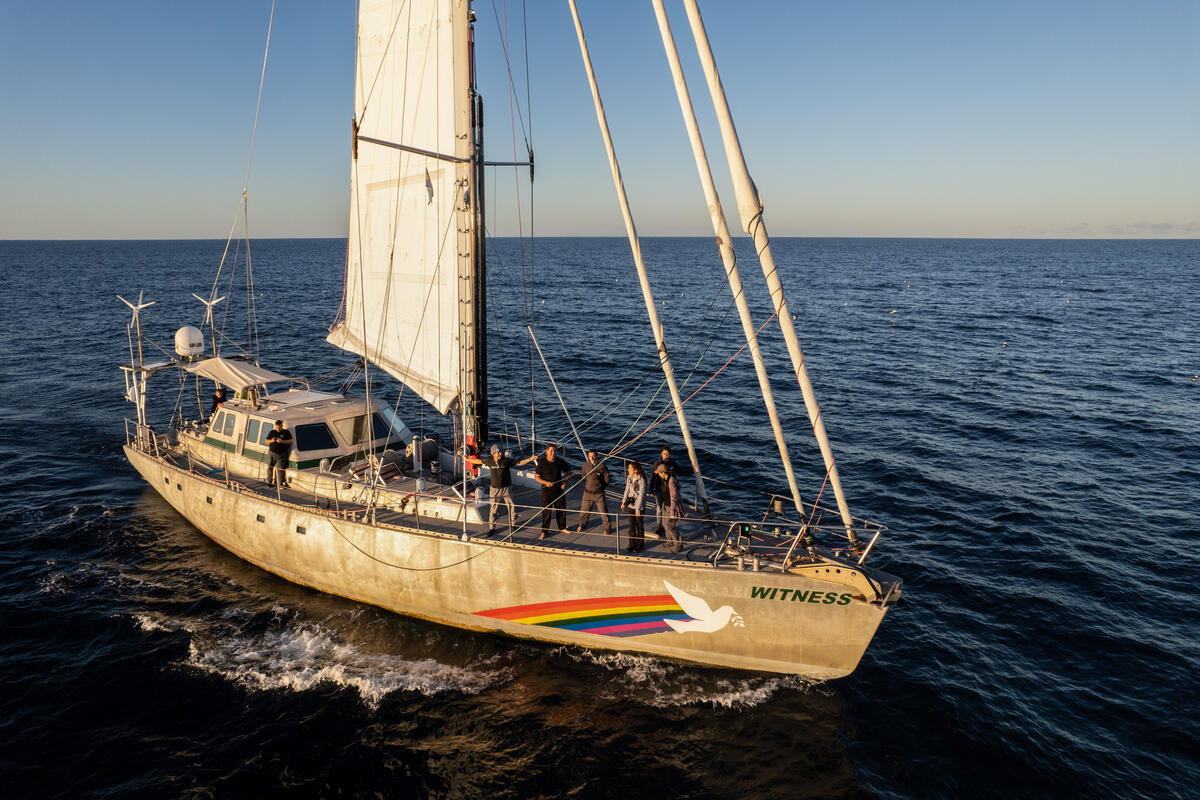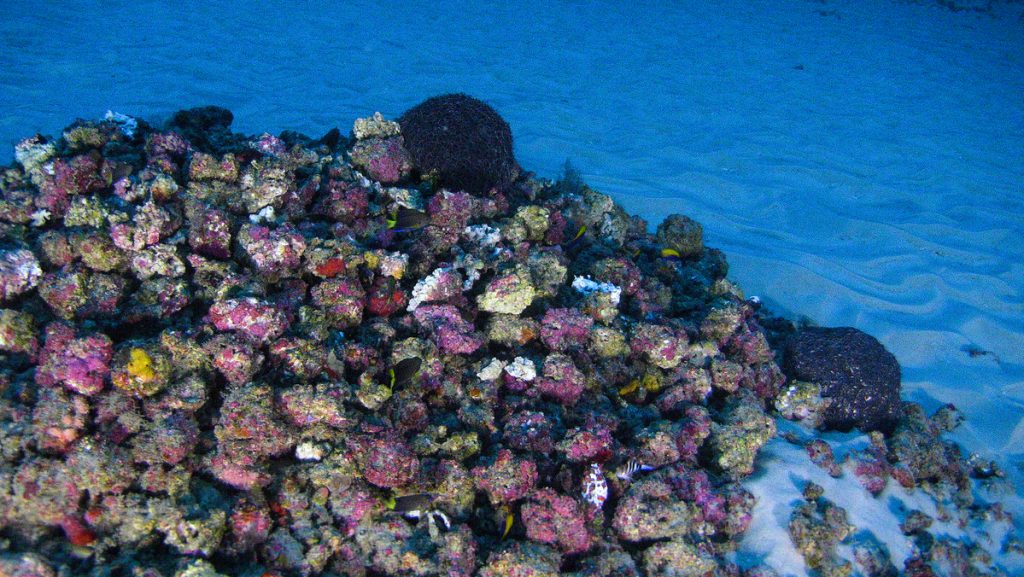The Greenpeace ship Witness is currently in Brazilian waters in the Atlantic Ocean to kick off the Protect the Amazon Coast Expedition. Over the month of March, the vessel will sail along the coast of the States of Amapá and Pará, bringing researchers from IEPA (Institute for Scientific and Technological Research of the state of Amapá) to collect data on sea currents in the region.
 Witness, the Greenpeace sailboat, when it toured around the area of the Argentine Sea where the oil industry plans to carry out seismic explorations, off the coast of Buenos Aires, Río Negro and Chubut. © Osvaldo Tesoro / Greenpeace
Witness, the Greenpeace sailboat, when it toured around the area of the Argentine Sea where the oil industry plans to carry out seismic explorations, off the coast of Buenos Aires, Río Negro and Chubut. © Osvaldo Tesoro / GreenpeaceThe oil industry is betting on advancing exploration in the mouth of the Amazon River Basin, but there are uncertainties about the impacts of the activity in the region. Coastal communities in the region are highly socio-environmentally vulnerable, and an oil spill could be devastating for the livelihoods of those who depend on healthy waters for their food source and income.
So Greenpeace Brazil is launching the Protect the Amazon Coast Expedition to support scientific research about the dynamics of coastal and oceanic waters to map out the possible pathways for oil to take in the event of a spill.
Oil exploration in the mouth of the Amazon River Basin
Currently, The Brazilian state-owned Petrobras is pushing to open a new oil exploration frontier in the region. The company is awaiting licensing from IBAMA, the Brazilian environmental agency. Petrobras had its request for authorization denied by IBAMA in May 2023, but appealed the decision.
A key factor in the licensing is the controversial oil dispersion modeling — one of the tools used to identify the risks of drilling — presented by Petrobras. The company claims that oil would not touch the Brazilian coast in the event of a spill, but leading oceanographers in Brazil are skeptical of the modeling.
Not only do researchers have doubts about this Petrobras claim, but so do local populations, who say they have witnessed the arrival of objects lost at sea reaching the region’s rivers and mangroves. The Protect the Amazon Coast Expedition aims to give the scientists and regional communities an opportunity to investigate the issue and assess the potential impact.
“Both the currents and the ecosystems of the Mouth of the Amazon River Basin – fundamental for generating income and livelihood to local communities – are still insufficiently known by science. In other words, we are facing an increase in pressure for oil exploration in an extremely sensitive area without even understanding the scale of the impacts of this activity”, says Marcelo Laterman, Ocean Campaigner for Greenpeace Brazil.
“How can we conceive of opening oil wells without knowing where a possible spill will lead? Or without consulting Indigenous Peoples and traditional communities, who also live under uncertainty about the impacts on their lives? The precautionary principle and the rights of People must be respected: without scientific consensus on the risks, there can be no exploration”, he emphasizes.
To carry out this monitoring, IEPA researchers will launch seven drifters (oceanographic equipment that emits GPS location signals) at different points in the mouth of the Amazon River Basin. This way, it will be possible to map surface currents on the coast of the state of Amapá.
The Amazon Reef
Beyond the vital importance to the livelihoods of the coastal communities in the region, an oil spill would be devastating to the recently discovered Amazon Reef. The discovery of the reef was announced in 2016 when a group of scientists published a paper about it. After a scientific research in 2017 aboard the Greenpeace ship Esperanza, the first images of the Amazon Reef were documented, proving the existence of the biome.
 One of the first images of the Amazon Reef taken from a submarine launched from the Greenpeace ship Esperanza in January 2017. © Greenpeace
One of the first images of the Amazon Reef taken from a submarine launched from the Greenpeace ship Esperanza in January 2017. © GreenpeaceBack then, French company Total had applied to drill for oil in the region. However, IBAMA denied Total’s license, citing “deep uncertainties” with the company’s Environmental Impact Assessment. An oil spill would affect the Amazon Reef and its marine biodiversity. Greenpeace Brazil worked for nearly two years alongside scientists and local people from Amapá to highlight the risks that oil drilling would bring to the Amazon Reef. Now the region is under threat again.
Stay tuned to follow the Protect the Amazon Coast Expedition, the documentation of the rich socio-biodiversity of the region and what communities in the region think about the possible impacts of oil exploration. You can also follow this journey on the Greenpeace Brazil website (in Portuguese).

 8 months ago
45
8 months ago
45


